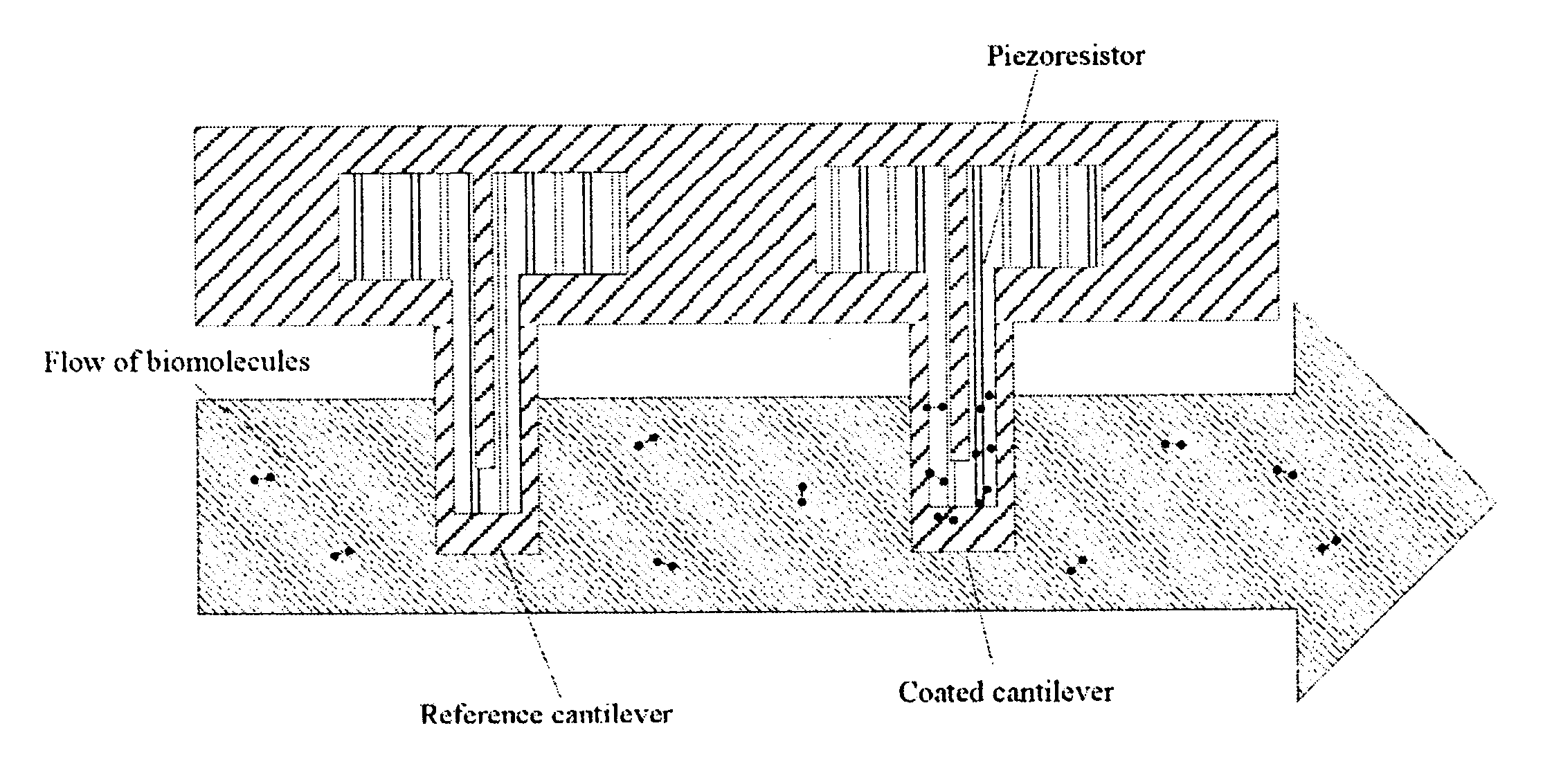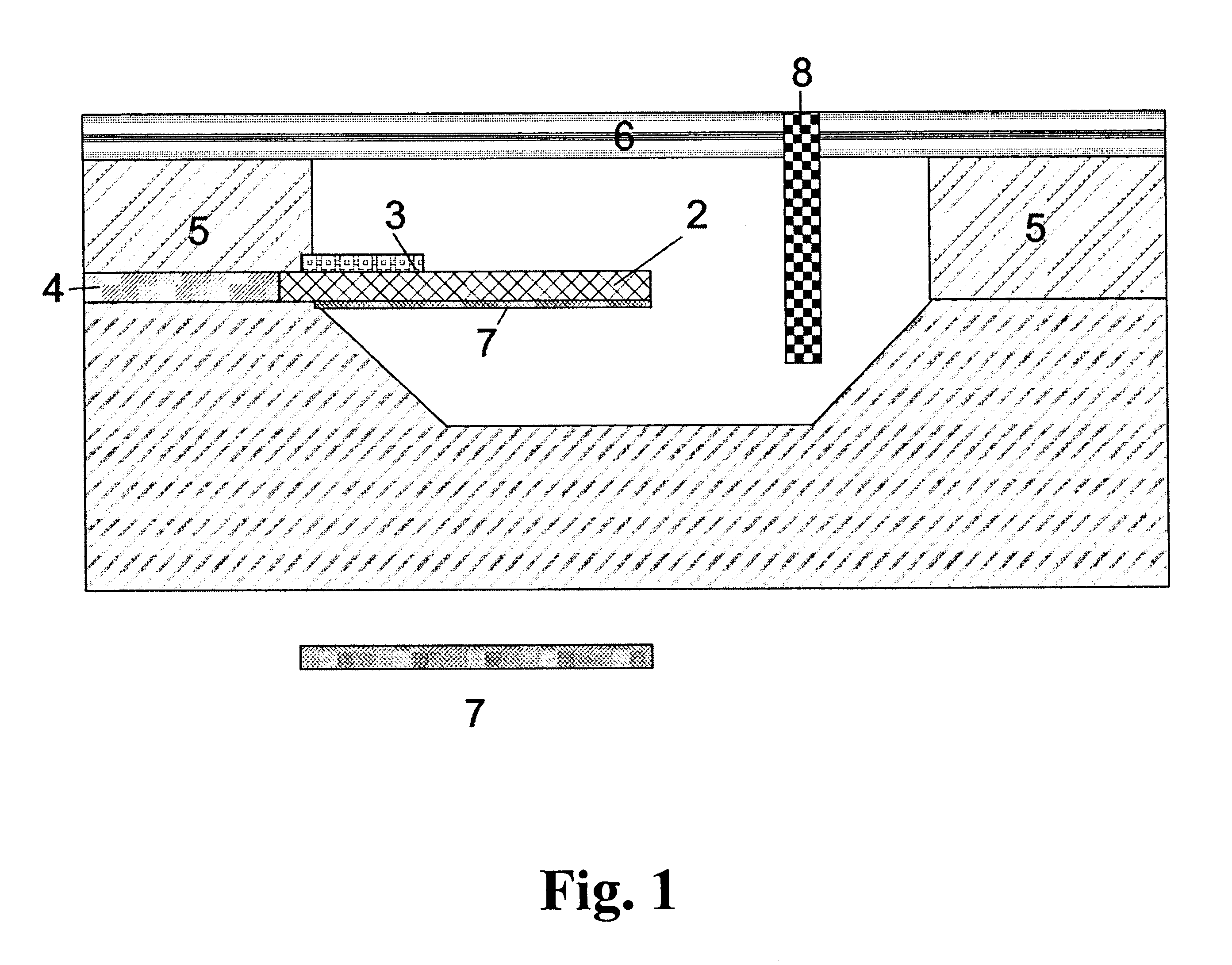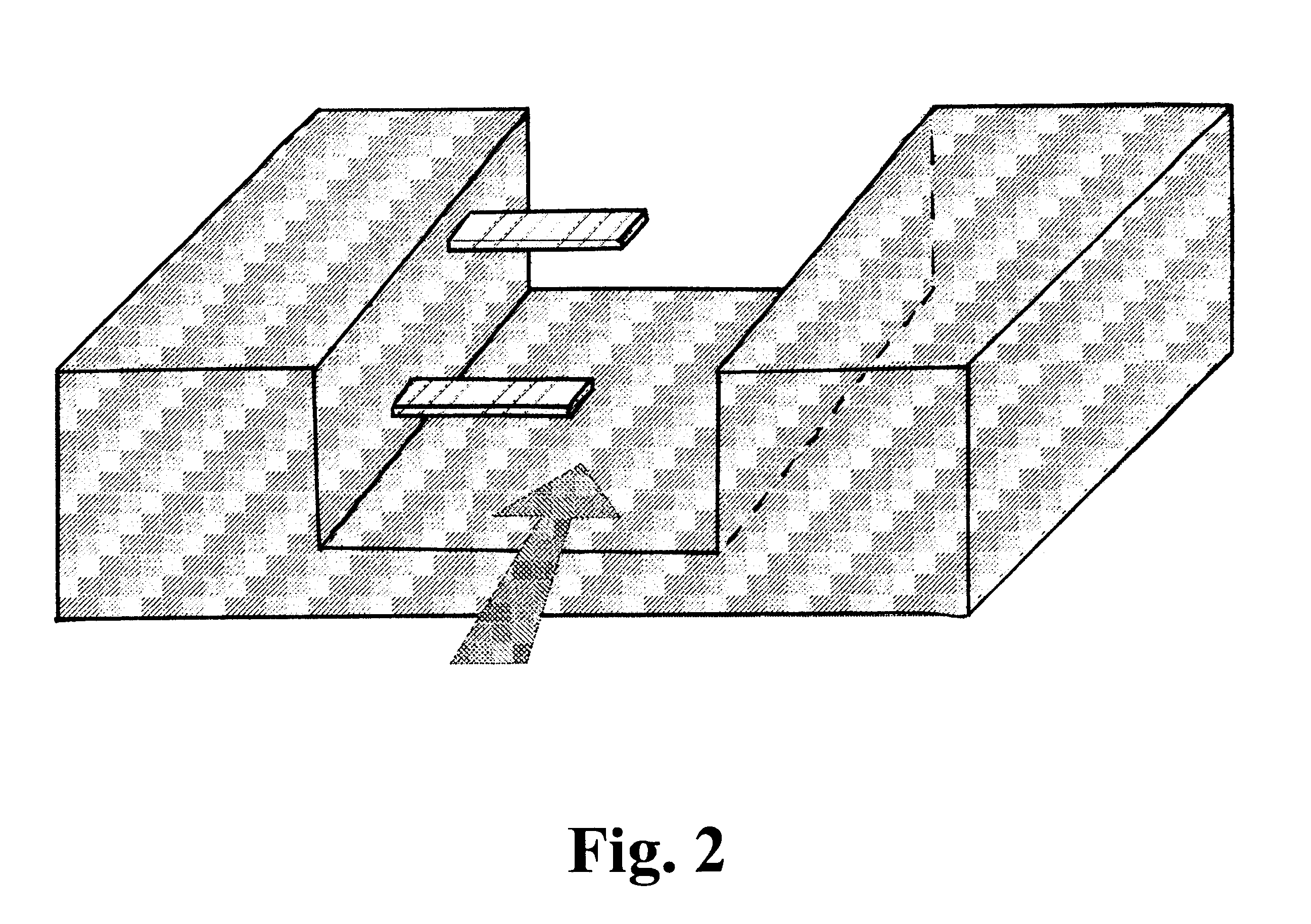Transducer for microfluid handling system
- Summary
- Abstract
- Description
- Claims
- Application Information
AI Technical Summary
Benefits of technology
Problems solved by technology
Method used
Image
Examples
example 2
Micro-membrane-based Sensor
For the fabrication of a micro-membrane-based sensor in a channel, the fabrication is also performed by micromaching. In contrast to the micro-cantilever or micro-bridge-based sensor, the micro-membrane is normally placed in the bottom of the channel. This design makes it possible to contact the resistors from the backside. Nevertheless, in following example the resistors will be contacted from the same side as the channel.
The first steps ( FIG. 5.a.-5.f.) in the fabrication sequence is basically the same as descriebed for the micro-cantilever or micro-bridge based sensor.
After the resistors have been defined by RIE the resistors are encapsulated in a 50-200 nm thick thermal oxide. Hereafter, a 20-100 nm thick LPCVD nitride is deposited to be used as an etch mask, but also as a diffusion barrier (FIG. 10.a.).
For the fabrication of contact holes through the nitride / oxide layer, a thin resist is spun on top of the wafer. The contact-hole mask is transferred ...
PUM
 Login to View More
Login to View More Abstract
Description
Claims
Application Information
 Login to View More
Login to View More - R&D
- Intellectual Property
- Life Sciences
- Materials
- Tech Scout
- Unparalleled Data Quality
- Higher Quality Content
- 60% Fewer Hallucinations
Browse by: Latest US Patents, China's latest patents, Technical Efficacy Thesaurus, Application Domain, Technology Topic, Popular Technical Reports.
© 2025 PatSnap. All rights reserved.Legal|Privacy policy|Modern Slavery Act Transparency Statement|Sitemap|About US| Contact US: help@patsnap.com



